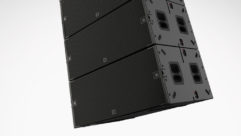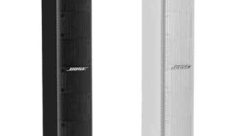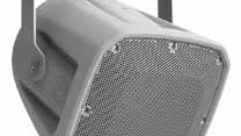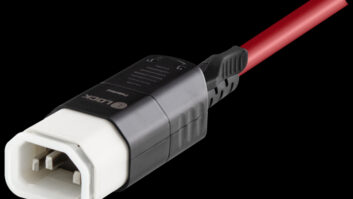JBL’s Differential Drive technology
Apr 1, 1999 12:00 PM,
Doug Button
Historically, the pro sound industry has gone to larger diameter voicecoils and more massive magnet structures to increase loudspeaker outputcapability within desired degrees of linearity. AT JBL, we are addressingadditional challenges in areas of driver fit and function as we strive tomake them smaller and lighter with no compromise in performance. JBL’sDifferential Drive technology is a step in this direction.
Differential Drive technology uses a pair of separate, reverse-wound voicecoils on a single voice-coil former and cone. The two coils operate inopposing magnetic fields to accomplish performance similar to aconventional design but in a considerably smaller and lighter structure.Although the dual-coil approach is not new, JBL has improved on the designthrough the application of two new features.
I will first explain how Differential Drive works by comparing the newdesign with the standard approach. For the sake of making anapples-to-apples comparison, assume that both designs have the same totalflux density in the gap and that the amount of copper and moving mass isthe same in each design. In the traditional JBL structure, magnetic flux Bcrosses a gap in which a coil of copper has a total electrical resistanceof R[e]. These quantities establish the value of the electromechanicalcoupling coefficient, (Bl)2/Re.
In Differential Drive topology, there are two magnetic gaps with opposingflux. The two voice coils are connected in reverse polarity so that themechanical forces they produce will add. For the moving mass to remain thesame, the two voice coils must have the same height and half the thicknessas in the standard design. The value of B will remain the same.
When these changes are made, the total length of the voice coil wire willbe doubled, and the resistance per-unit length of wire will be halved. Thetotal resistance of both voice coils in the series will then be four timeswhat it was with the standard approach. Since the length has doubled, thequantity (Bl)2 will now be four times what it was in the standard approach.This results in a coupling coefficient value of 4(Bl)2/Re. Canceling outthe fours yields the previous value of (Bl)2/Re.
In other words, we have exactly the same coupling coefficient as before,but we have picked up several important advantages relative to thetraditional design. The new voice coil assembly now has twice the surfacearea of the traditional one, and this means that it will have twice theheat dissipation of the traditional single coil, which translates directlyinto twice (+/-3 dB) the power input capability for a given operatingtemperature and observed amount of power compression. The new dual voicecoil structure will have less effective inductance than the standard onebecause the reverse-wound coils will have negative mutual inductancebetween them. This translates into a flatter impedance curve at higherfrequencies, producing more output for a given drive voltage. Finally, thenew design is generally more compact, and when used with neodymium magnets,it requires less steel to complete the magnetic circuit assembly.Consequently, it is much lighter. The design, however, is not limited tonew magnet materials and can be used with standard ferrite magnets withbenefits one and two above still applicable.
The two important design features referred to earlier deal with overallsystem linearity. First, the two voice coils are not placed at the axialcenter points of their respective magnetic gaps; they are symmetricallydisplaced axially outward so that the overall net distribution of fluxdensity in the combined gap space is most linear. This ensures maximumsystem displacement linearity for the moving system.
In high-level operation, low-frequency high-displacement signals often tendto drive the voice coils out of their linear operating region. Whiletraditional designs rely on progressive suspension designs to constrainthis motion mechanically, the Differential Drive transducers makeadditional use of a shorted electromagnetic braking coil. This is shown inFigure 1. The coil is located mid-way between the two driving coils, and atnormal excursions, it is virtually inert. On high excursions, the shortedcoil enters each magnetic field alternately, and current is induced intothe coil. That induced current, by Lenz’s law, acts to oppose the motionthat causes it. The result is additional braking on cone motion, resultingin lower distortion.










